Have you ever wondered what are the best survival crops to plant in your garden in order to create long-lasting food security. Cultivating these staple foods not only enhances self-sufficiency but also ensures robust health.
It’s one way to secure your food supply by transforming your backyard garden into a survival grocery store — filled with the best survival crops that could keep you and your loved ones nourished, even in the toughest of times.
It sounds like a task, I know, but believe me, it’s easier than you think. It’s about making smart choices, focusing on nutritious crops that are easy to grow and capable of storing for longer periods.
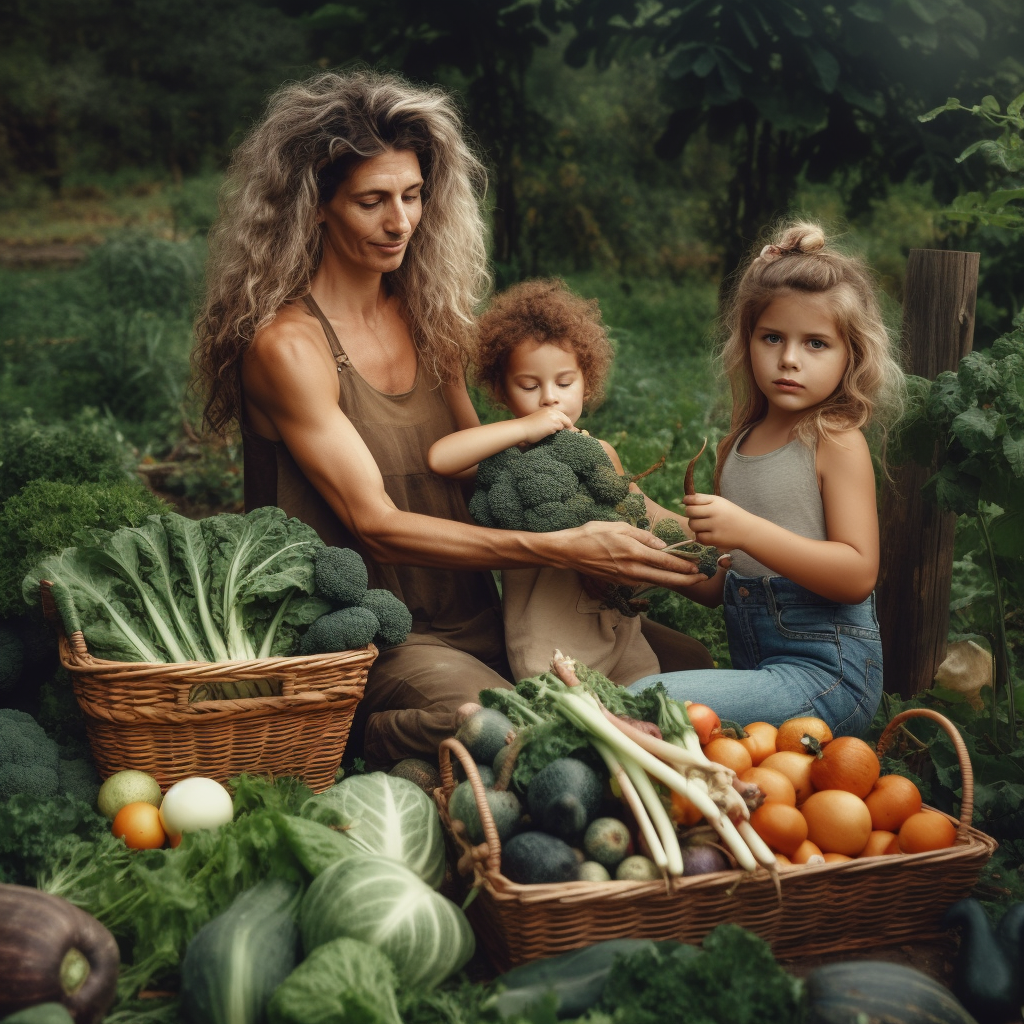
In This Guide
The 31 Best Survival Crops
These are the 31 best crops to grow in your home garden to create food security.
1. Potatoes
Potatoes offer high-calorie sustenance and grow in diverse climates. These all-time favorite are stacked with vitamin C, which is great for the immune system, and they also contain fiber and potassium.
Cut a seed potato into pieces, each with an ‘eye’, and plant them.
Then all you need is well-drained soil and plenty of sunlight. In a few months, you’ll be harvesting them.
You can store potatoes for months in a cool, dark place. One thing, though –- don’t store them near apples. Apples give off a gas that can make your potatoes sprout faster.

2. Beans
Beans are protein-rich and require minimal care. Whether we’re talking bush beans, pole beans, or fava beans, they’re all jam-packed with protein, vitamin B, and fiber.
They love soaking up the sun in a warm climate, and late spring is their prime time to get planted and start sprouting.
Plant beans about an inch deep, and in a few weeks, you’ll see them sprout. They’re easy to store, too, just let them dry on the vine, and they can last for years.
They’re perfect for soups, stews, or even salads. Plus, as a bonus, they improve soil fertility by fixing nitrogen — a perfect vegetable for crop rotation.
3. Corn
Corn serves as a versatile crop with various culinary uses. It isn’t just for summer barbecues. It’s a survival crop packed with fiber and antioxidants. It’s a good source of fiber, plus it’s loaded with B vitamins and antioxidants.
It’s a warm-season crop that needs lots of sunlight and fertile, well-drained soil. Plant the seeds about 1 inch deep and 4 inches apart in rows, and in about 60 – 100 days, you’ll be harvesting.
Dry the kernels, and you can store them for years. You can grind them into flour, make cornmeal, or simply cook and eat them.
And here’s a fun fact: Did you know you can also use corn as a companion plant? It provides tall stalks for climbing plants like beans –- even fava beans or bush beans — to grow on. A survival garden dynamic duo right there!
4. Squash
Squash provides abundant yield and long shelf-life. Whether winter squash or summer squash, these versatile veggies pack a nutritional punch. They’re loaded with vitamins A, C, and E and full of antioxidants, making them a real health booster.
Squash is super easy. They love a sunny spot and well-drained soil. And remember, give them some space with mounds to sprawl on. They usually take around 60 – 100 days to grow, depending on the variety.
Storing squash is simple. Winter squash can last for months in a cool, dark place, while summer squash needs to be used up a bit quicker.
Roast them, make soup or even pie, and enjoy their nutritious benefits.
5. Kale
Kale is nutrient-dense and frost-resistant. It is a nutritional powerhouse that’s hardy and can withstand frost and even snow. It grows best in cool weather, in well-drained, fertile soil.
You can start them as seeds indoors and transplant them or directly sow them 1/2 inch deep. It takes about 55 – 75 days to mature, but you can start harvesting leaves as soon as they’re big enough to eat.
Storing kale is straightforward. Just wrap it loosely in a damp paper towel and pop it in the fridge. It’ll last about a week.
Saute it, add it to soups, or make a salad; it’s a versatile green that will keep you healthy.
6. Sweet Potatoes
Sweet potatoes offer complex carbohydrates and adaptability to soil types. These tubers are rich in vitamins A and C, fiber, and potassium and can be stored for weeks. They prefer a warm climate and well-drained, sandy soil.
Plant sweet potato slips (young sweet potato plants) about 12 inches apart, and in about 90 – 170 days, they’re ready to harvest.
Bake them, roast them, or make a stew; their sweet taste will be a comfort in challenging times.
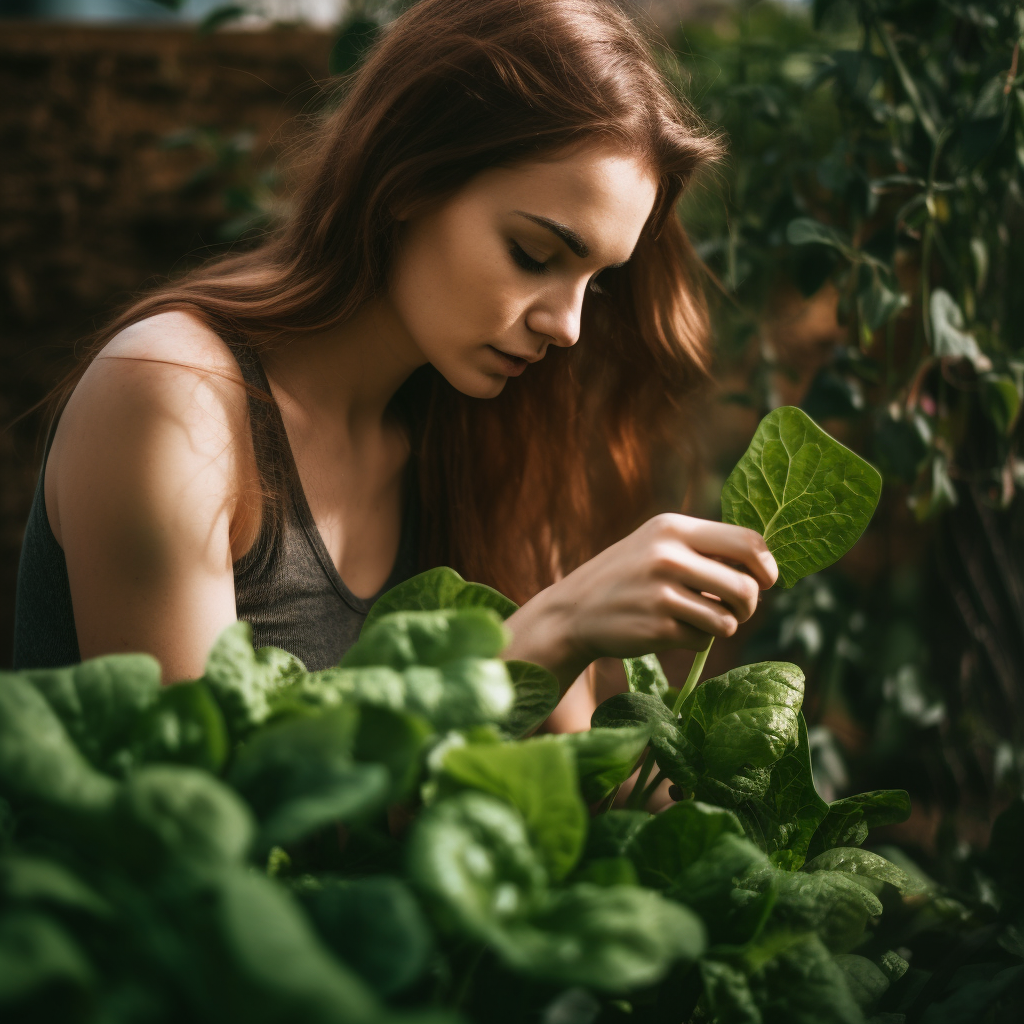
7. Spinach
Spinach grows quickly and is rich in vitamins A, C, and K and a bunch of essential minerals.
It is a nutrient-dense leafy green that’s easy to grow and can thrive in a wide range of climates. It’s also a great source of iron and other essential nutrients.
It prefers cold weather and fertile, well-drained soil so it’s best planted in early spring or late summer for a fall harvest.
Use spinach fresh in salads, steamed, or added to soups and stews.
Plant the seeds 1/2 inch deep and 2 – 3 inches apart. In just 4 – 6 weeks, you can start harvesting.
To store them, just keep them in a plastic bag in the fridge, and they’ll stay fresh for about a week. Use it in salads, saute it, or add it to soups for a nutritional boost.
8. Tomatoes
Tomatoes are versatile for cooking and rich in antioxidants. Few things beat the taste of a freshly plucked tomato. They’re packed with vitamins and antioxidants and grow well in most climates, although they prefer warm weather.
Plant them in fertile, well-drained soil and keep them in full sun. From seed to harvest takes about 60 – 80 days.
Store them fresh for a few days, or keep them at room temperature until they’re fully ripe, and they’ll be good for about a week. Use them in salads, sauces, or just eat them fresh.
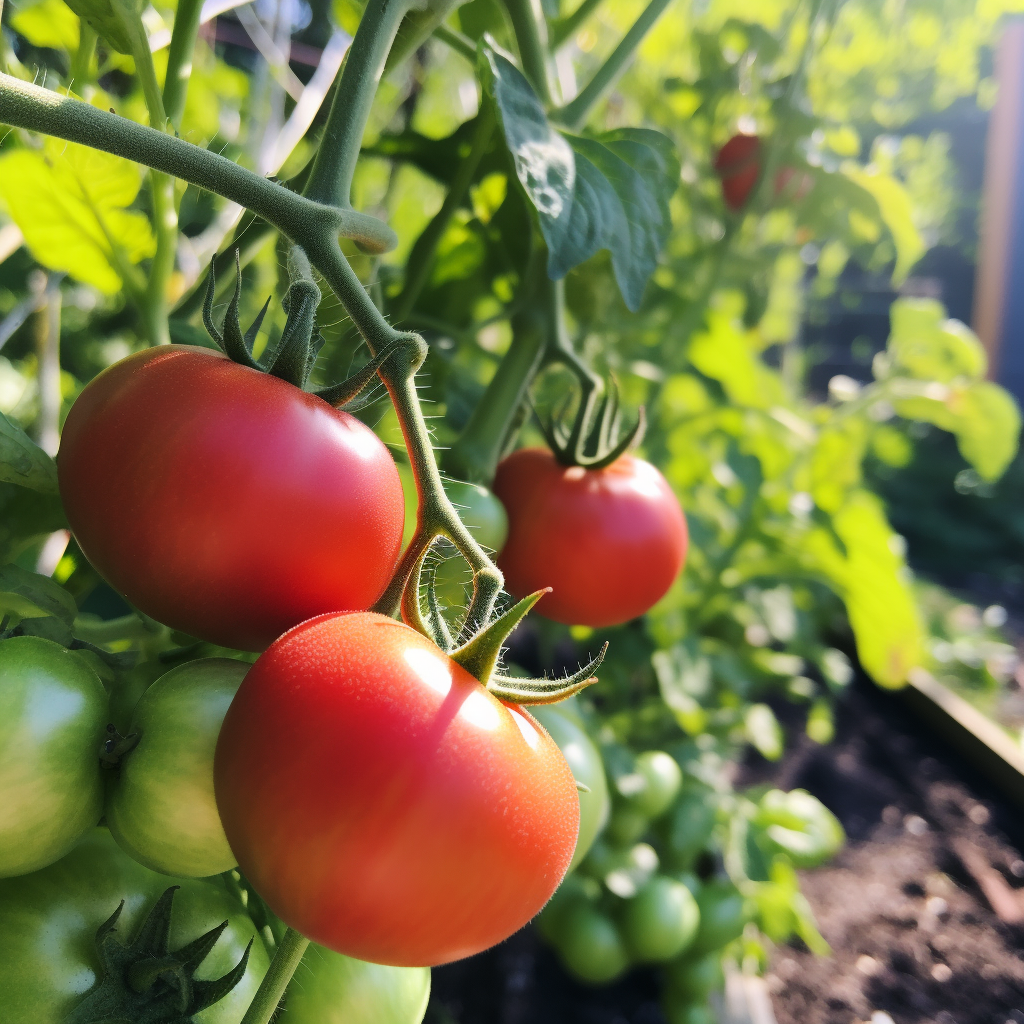
9. Peppers
Peppers yield high returns and offer a variety of flavors. Both bell and hot peppers can provide essential vitamins and add flavor to your meals. They love warm, well-drained soil and plenty of sunshine. It takes about 60 – 90 days for them to bear fruit.
When it comes to storage, just pop peppers in the fridge, and they’ll stay crisp for a week or two.
Peppers are real culinary chameleons. Use them in stir-fries, stuff them, grill them, or just slice them up for a zingy salad.
10. Cabbage
Cabbage is durable and provides vitamin K. You can store for it long periods and provides many health benefits. Cabbage prefers cooler weather and fertile, well-drained soil.
Plant cabbage seeds 1/2 inch deep and 12 – 24 inches apart. They’re ready to harvest in about 70 – 120 days.
Store them in a cool, humid place, and they can last for months. Use them in salads and soups, or ferment them to make sauerkraut.
11. Carrots
Carrots are easy to grow and beneficial for eyesight. Carrots are nutrient-packed, easy to grow, and can be stored for months. They prefer cool weather and deep, loose soil.
Plant the seeds about 1/4 inch deep and thin the seedlings to about 2 inches apart. In about 2 – 4 months, you’ll be harvesting them.
Store them in a cool, humid place to last for months. Eat them raw, steam them, or use them in soups and stews.

12. Beets
Beets are hardy and support liver health. They are an excellent source of nutrients. Plus, you can eat both the roots and the leaves. They prefer cool weather and well-drained, loose soil.
Plant the seeds 1/2 inch deep and about 1 inch apart, then thin the seedlings to about 3 inches apart. They’re ready to harvest in about 50 – 70 days.
Store the roots in a cool, humid place, and they’ll last for months. Roast them, boil them, or pickle them — they’re versatile and nutritious.
13. Onions
Onions are storage-friendly and have antibacterial properties. They are easy to store and an essential flavor base for many meals. They can grow in a wide range of climates but prefer cooler weather.
Plant them in fertile, well-drained soil. Use sets (small bulbs) for easy planting, and they’ll be ready to harvest in about 3 – 5 months.
Store them in a cool, dry place, and they can last for several months. Use them in almost any savory dish for added flavor.
14. Garlic
Garlic is medicinal and serves as a natural pest deterrent. As one of those “plant it and forget it” perennial plants, garlic loves cooler weather and well-drained soil. This little bulb is loaded with vitamin C, B6, and manganese, and its antioxidant abilities are off the charts.
Plant the cloves about 2 inches deep and 4 inches apart. They’re ready to harvest in about 9 months.
Store them in a cool, dry place, lasting for months. Use them in a variety of dishes to boost both flavor and nutrition.
15. Peas
Peas enrich soil and are a fantastic source of protein and fiber.
Peas are a great source of protein, fiber, and vitamins and minerals, including vitamin K and manganese.
They like well-drained soil and can handle a bit of frost.
Plant the seeds about an inch deep and a few inches apart. In about 60 – 70 days, you’ll be harvesting.
Fresh peas can be stored in the fridge for a few days, or you can freeze or dry them for long-term storage.
Eat them fresh, add them to salads, or cook them in soups and stews.
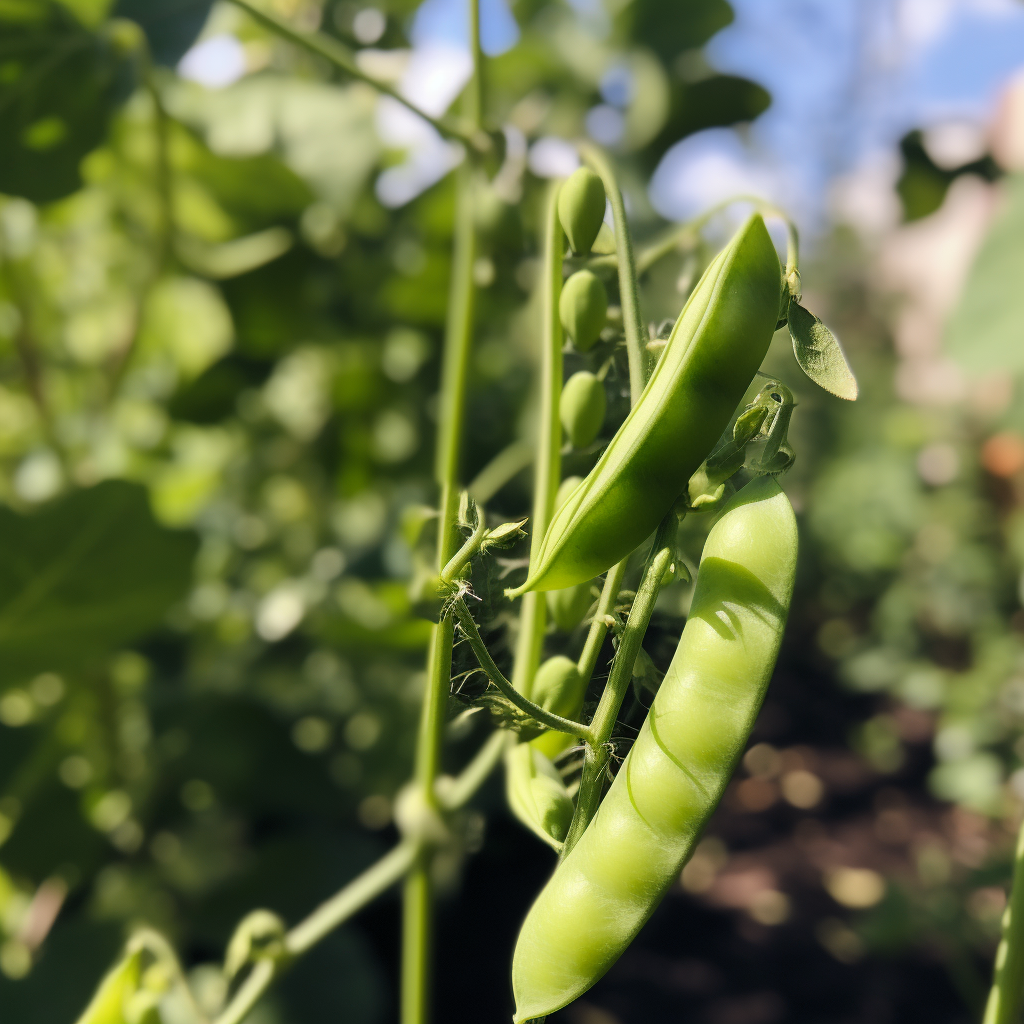
16. Zucchini
Zucchini grows abundantly and offers various culinary applications. This fast-growing vegetable is low in calories but high in essential nutrients. It thrives in warm weather and well-drained, fertile soil.
Plant the seeds about an inch deep and give them plenty of space to grow. You’ll be harvesting them in just 45 – 55 days.
You can store fresh zucchini in the fridge for a couple of weeks or freeze them for long-term storage. Grill, saute or bake them into delicious zucchini bread.
17. Lettuce
Lettuce is quick to harvest and low in calories. It also takes up very little space, making it an ideal survival crop. It prefers cool weather and moist, fertile soil.
Plant the seeds about 1/4 inch deep and a few inches apart. You’ll harvest them in just 30 – 60 days.
Store fresh lettuce in the fridge for a few days. Use it in salads or add it to sandwiches for a fresh, crispy bite.
18. Radishes
Radishes mature quickly and can break compacted soil. Radishes are one of the fastest-growing vegetables, and the roots and the leaves can be eaten.
They love cool weather and well-drained soil. And talk about speedy -– you can harvest them in as little as three weeks! Just plant the seeds about 1/2 inch deep and an inch apart.
Fresh radishes can be stored in the fridge for a few weeks. Eat them raw, add them to salads, or pickle them for a tangy treat.
19. Swiss Chard
Swiss Chard is nutrient-rich and grows well in partial shade. This vegetable is a nutrient-dense leafy green that can tolerate cool and warm weather. It’s a cool-weather crop that enjoys well-drained soil.
Plant the seeds about 1/2 inch deep and a few inches apart. In about 50 – 60 days, you’ll be harvesting them.
Fresh chard can be stored in the fridge for a few days. Saute it, add it to soups, or use it in salads.
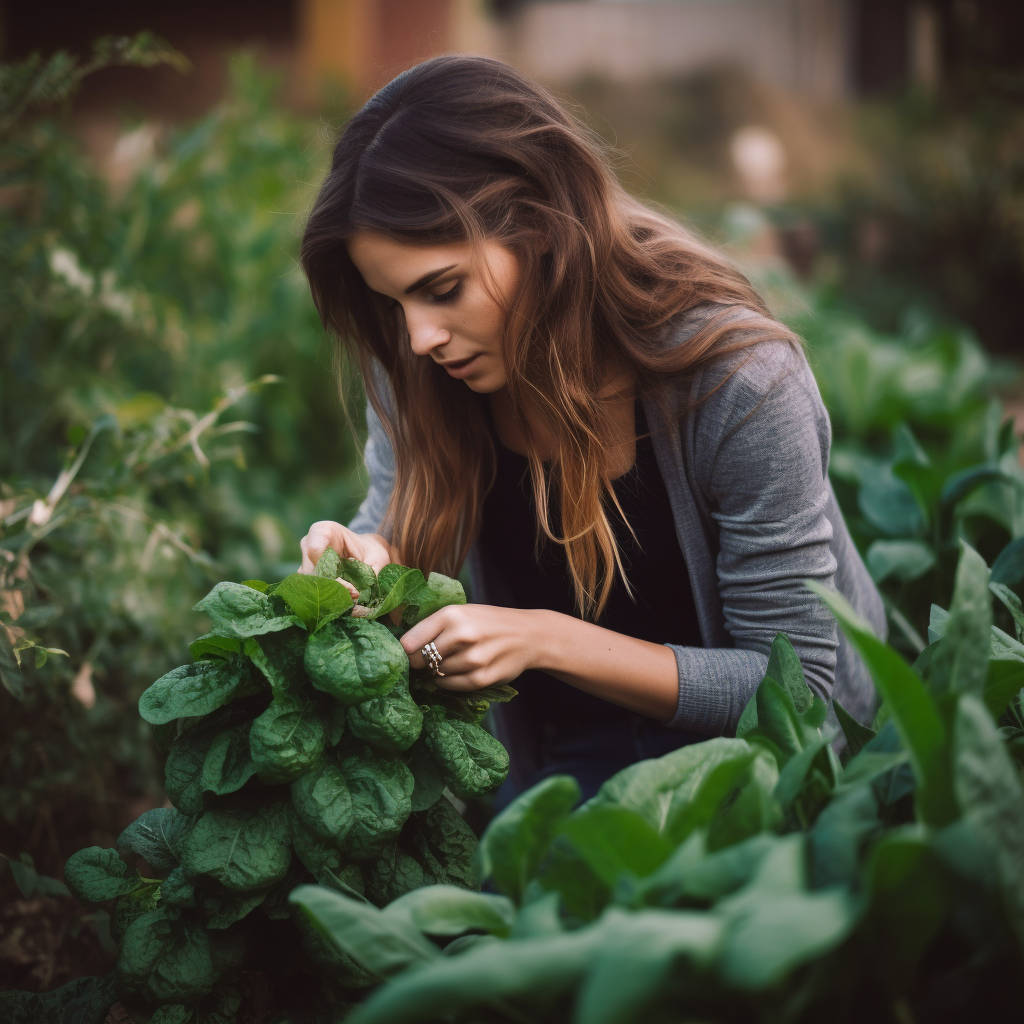
20. Cucumbers
Cucumbers are hydrating and suitable for trellising. They are packed with nutrients. They love warm weather and fertile, well-drained soil.
When planting, just pop the seeds about 1 inch under the soil and give them plenty of space to climb. You’ll be enjoying your own crisp, homegrown cucumbers in just 50 – 70 days.
You can store fresh cucumbers in the fridge for a week, or you can pickle them for long-term storage. Eat them fresh, add them to salads, or pickle them for a crunchy snack.
21. Yams
Yams are calorie-dense and store well. They are root vegetables known for their starchy content and versatility in the kitchen. They prefer a tropical climate and well-drained soil, making them ideal for areas with a lot of rainfall.
Yams can be a bit tricky to grow as they require a long growing season (up to 11 months) and have specific temperature needs. Despite this, they’re highly beneficial as a survival crop due to their high caloric content and long storage potential.
You can roast, boil, fry, or mash yams, and they can even be used in baking as a healthier alternative to regular flour.
22. Okra
Okra thrives in heat and is rich in fiber. It has a unique texture and mild flavor and is a favorite in many southern and tropical cuisines. It’s a warm-weather crop that loves the sun and well-drained soil.
Okra can be a bit tricky to start from seed, but once established, the plants are fairly low-maintenance. The pods are best harvested when small and tender, usually about 2 – 3 inches long.
Okra is a good source of vitamins and fiber and can be fried, stewed, or pickled for a tangy treat.
23. Amaranth
Amaranth is drought-resistant and a source of complete protein. It is a lesser-known but super impressive crop. It’s a great source of protein, fiber, and micronutrients like manganese, magnesium, and phosphorus.
It thrives in warm weather and is tolerant of poor soil conditions –- talk about a hardy plant! It takes about 90 – 120 days to mature.
To store amaranth, keep the seeds in a cool, dark place, and they can last for years.
You can cook amaranth leaves like spinach, and you can pop the seeds like popcorn. You can also cook it into cereal or ground it into flour.
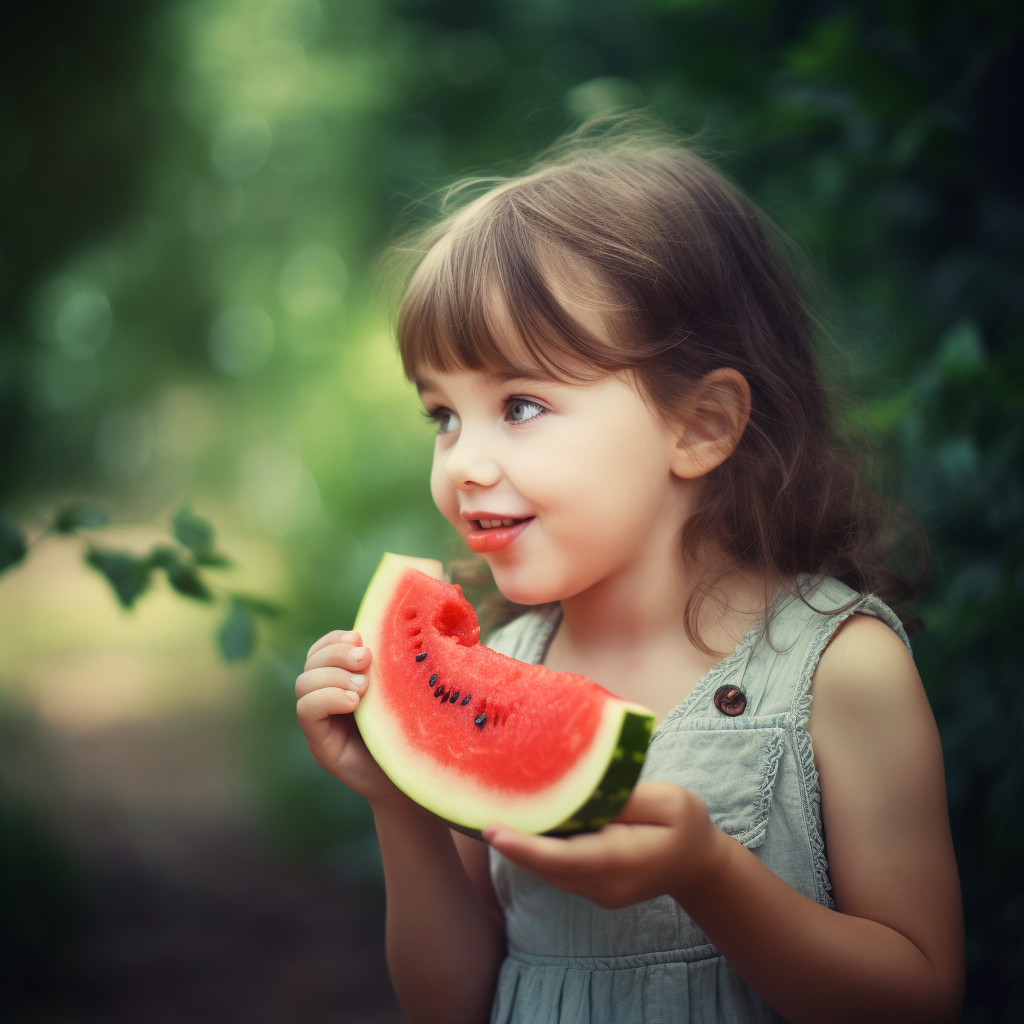
24. Melons
Melons offer hydration and are a source of vitamins. Melons, including watermelons, cantaloupes, and honeydews, are a sweet treat that can be grown in your survival garden
They prefer warm weather and plenty of space to spread out, although some smaller varieties can be grown vertically to save space.
They require a bit of care to ensure a good harvest, including regular watering and protection from pests.
But the reward –- sweet, juicy fruit –- is well worth the effort.
25. Berries
Berries are antioxidant-rich and attract beneficial wildlife. Berries, including strawberries, raspberries, and blueberries, are one of the best foods to grow in a garden. They’re packed with vitamins and antioxidants, and they’re also a real treat to eat.
Berries can be a bit challenging to establish as they have specific soil and care requirements, but once they’re established, they can produce fruit for many years.
Berries are great for fresh eating, in desserts, or preserved as jam or jelly.
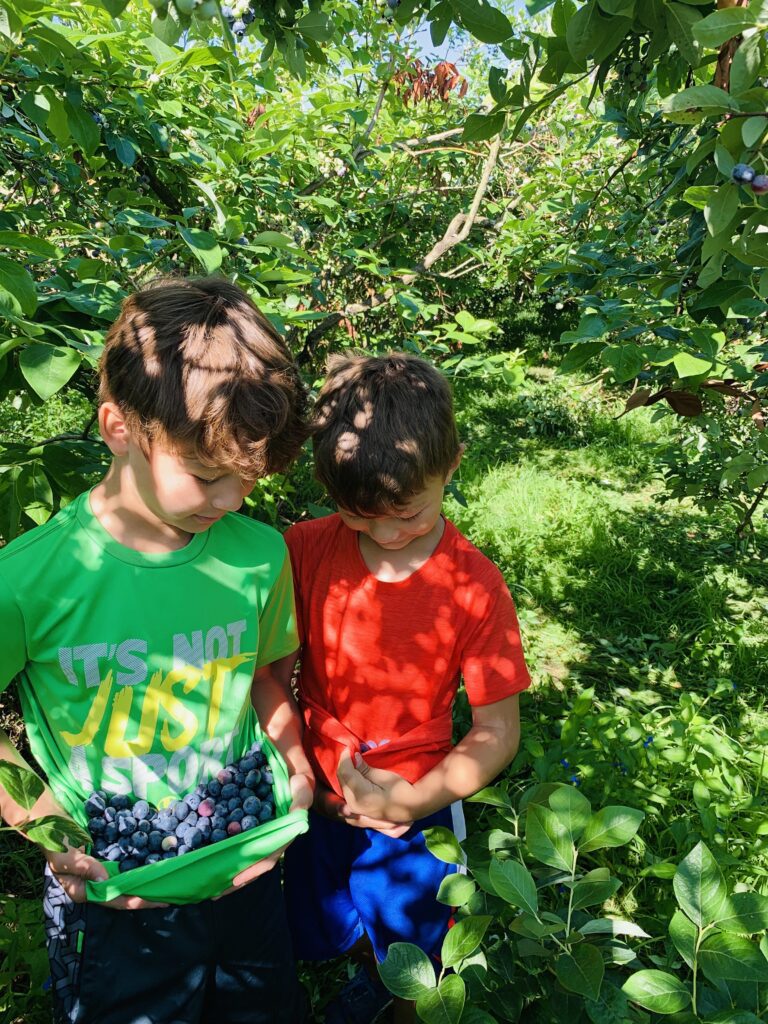
26. Herbs
Herbs offer medicinal properties and culinary versatility. They are an essential part of any survival garden. They take up little space, are easy to grow, and can add flavor and nutrition to your meals. Some common herbs include basil, rosemary, thyme, and parsley.
Plus, you can grow them in the ground or in containers. And they’re fast growers — you can start harvesting as soon as the plant has enough foliage to maintain growth.
Herbs are great for fresh use in cooking. Plus, many double as medicinal plants, which can be invaluable in a survival situation. Think of chamomile for calming tea or mint for digestion.
Storing herbs is easy. Just dry them out, and they can last for months, even years.
27. Oranges
Oranges provide vitamin C and are long-lasting when stored. They grow best in tropical and subtropical climates, needing plenty of sunlight and well-drained soil.
While growing fruit trees like oranges can take a few years to produce fruit, the wait is worth it, providing fresh, nutritious fruit right from your backyard. They require regular watering and occasional feeding to thrive.
Oranges can be enjoyed fresh, juiced, or even preserved in marmalades.
28. Lemons
Lemons are multi-purpose and rich in vitamin C. Similar to oranges, lemons thrive in warmer climates with plenty of sunlight. They provide a great source of Vitamin C and add a bright, tangy flavor to foods.
Lemons require well-draining soil and regular watering to produce well.
They’re perfect for use in various dishes, from savory to sweet, and the zest can add extra flavor to meals. Furthermore, lemons have numerous health benefits and can be used in natural cleaning solutions.
29. Avocados
Avocados offer healthy fats and grow well in warm climates. They are a source of healthy fats and are extremely versatile in the kitchen. They thrive in warm climates with mild winters and require well-draining soil.
Avocado trees can be finicky and require a fair amount of care, but the yield is worth the effort.
Fresh avocados can be used in salads, made into guacamole, or even used as a healthier substitute for butter in some recipes.
30. Plums
Plums are easy to preserve and high in antioxidants. They are an excellent source of vitamins, minerals, fiber, and antioxidants. They grow well in a variety of climates, but they do prefer well-drained soil and plenty of sunlight.
Plum trees require pruning to maintain shape and encourage better fruit production.
Fresh plums are a sweet treat, but they can also be used in baking, preserved as jam or jelly, or dried into prunes for long-term storage.
31. Broccoli
Broccoli is nutrient-rich and grows well in cooler climates. It is a great source of vitamin C, iron, potassium and fiber. It’s also a good way to add a little more protein to your diet during a survival situation when protein may be scarce.
Plant broccoli seeds 1/4″ to 1/2″ down into the soil leaving 12″-18″ of space between plants so there is plenty of room to grow.
Usually, the seeds will start to sprout in 4-7 days in cool climate. (45-85 F)
Broccoli can be eaten fresh, steamed or sautéed. It is delicious added to soups, stir fry, pasta and rice and makes a great addition to your food supply.
What Makes The Best Survival Crops
The best survival crops offer a balance of essential nutrients, ease of growth, and longevity. When selecting the best crops for your survival garden, there are several key factors to consider.

Nutrient-Dense
Nutrient-dense options fortify health and require less consumption. In a survival situation, every calorie counts. You want crops that pack a lot of calories into a small serving.
Foods that are high in calories can provide the energy needed to perform essential tasks.
Crops like potatoes, beans, and sweet corn are high in calories and can provide the energy you need.
Leafy greens like spinach and kale are packed with essential vitamins and minerals.
Easy To Grow
Easy-to-grow crops minimize the need for intensive care and specialized knowledge. Crops that are easy to grow reduce the need for constant tending. You don’t want to rely on a crop that requires a lot of care or has a high chance of failure. Crops like radishes, zucchini, and peas are relatively low-maintenance and are a good choice, especially for beginner gardeners.
Versatile To Cook
Versatile crops can be prepared in multiple ways, offering culinary variety. The best survival foods can be used in various dishes. This not only prevents “menu fatigue” but also allows you to make the most of the ingredients you have on hand.
Corn, for example, can be used in everything from soups and stews to bread and desserts.
Good Storage Potential
Crops with good storage potential can last through off-seasons, ensuring year-round availability. In many climates, you can’t grow fresh produce year-round. Crops like onions, garlic, and winter squash can be stored for months without refrigeration, providing food in the winter months or during times of scarcity.
Seed-Saving Potential
Crops with seed-saving potential can be replanted, reducing dependence on external sources. Consider whether you can save and successfully germinate seeds from your crops. This allows you to sustain your garden year after year without relying on outside sources for seeds.
Heirloom tomatoes, peppers, and beans are known for their reliable seed-saving potential.
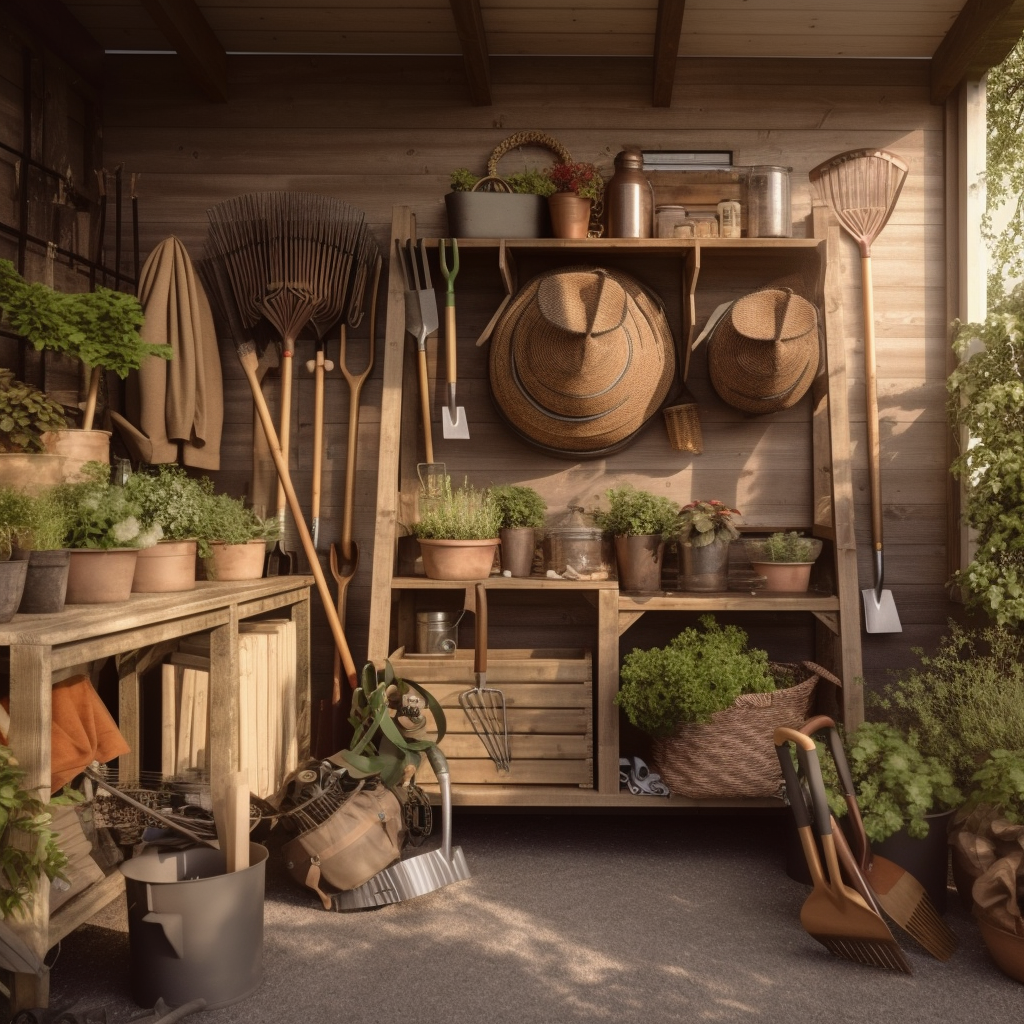
Essential Tools For Your Survival Garden
Essential tools elevate the efficiency and productivity of your survival garden. To ensure your survival garden thrives and gives you the best yield, you’ll need a few essential tools. Here’s a list with a brief rundown of each:
- Spades or garden forks help loosen the soil, making it easier for plant roots to penetrate deeper.
- Hoes or trowels are perfect for weeding and maintaining the garden. A sharp hoe can cut through weeds, while a trowel is excellent for planting smaller crops and herbs.
- Garden rakes are essential for leveling the soil after turning it. A leveled garden will ensure an even distribution of water.
- Pruning shears are for keeping your plants in check and removing any dead or diseased branches, pruning shears are a must.
- Watering can or garden hose will help you deliver water to your plants. Depending on the size of your garden, a simple watering can may suffice, or a garden hose might be more efficient.
- Wheelbarrow is an ideal tool for larger gardens. It’s handy for moving soil, compost, or harvested crops.
- Gloves and boots will help protect your hands and feet, especially when dealing with thorny plants or rocky soil.
Remember, your tools are an investment. Good quality tools, well cared for, can last for many growing seasons.
How to Grow, Plant, And Store The Best Survival Crops At Home
Knowing how to grow, plant, and store your crops ensures a perpetual food supply and is crucial for self-sufficiency.
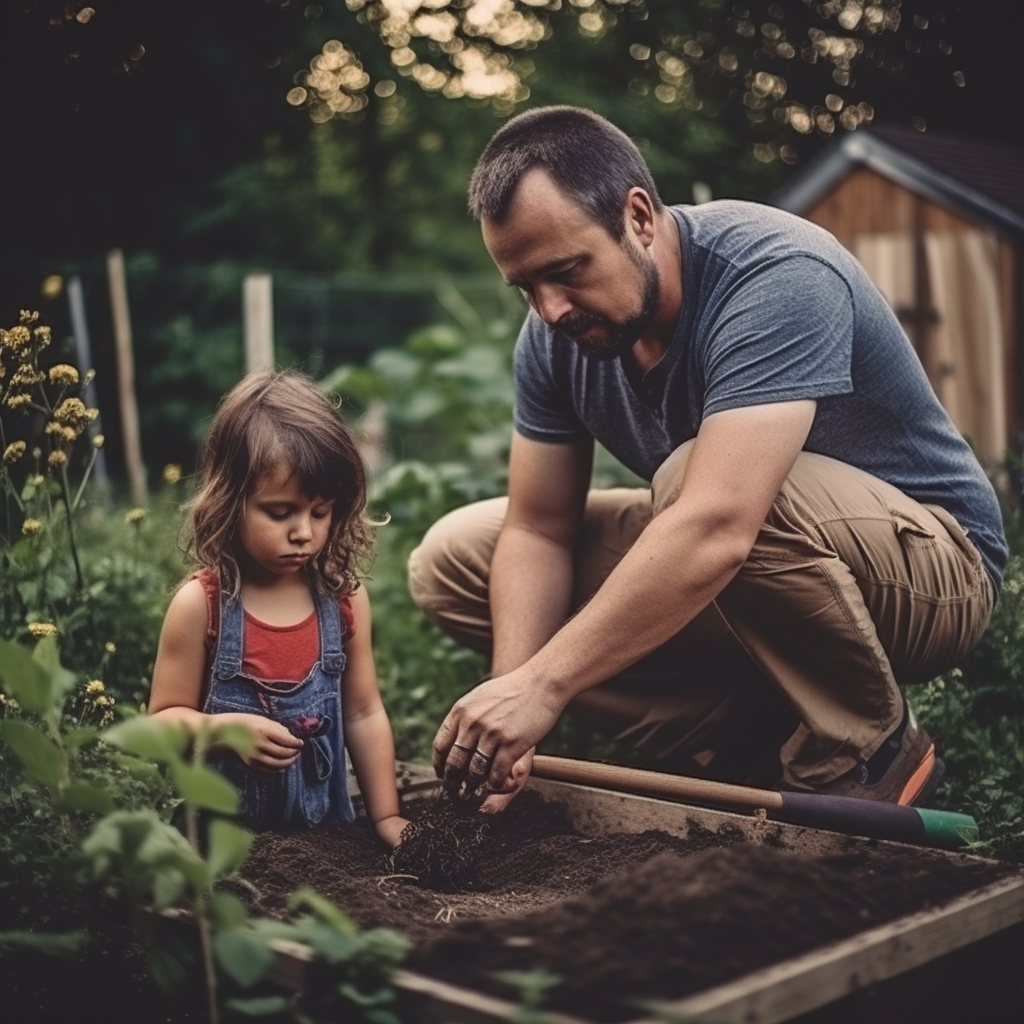
1. Plan Your Survival Garden
Planning your survival garden involves choosing the right crops and mapping out your space. Start by assessing the available space you have.
Remember, you don’t necessarily need a huge backyard –- many crops can be grown in containers on a balcony or even indoors.
Next, consider your climate and soil type. Some crops prefer cool weather, others prefer warm. Some like sandy soil, while others prefer clay. Choose crops well-suited to your conditions for the best chance of success.
Also, think about your dietary needs and preferences. There’s no point in growing a crop you or your family won’t eat.
Finally, draw up a garden plan. This will help you maximize your space and ensure each plant has the room it needs to grow. Remember to account for crop rotation to maintain soil health and prevent the buildup of pests and diseases.
2. Prepare the Soil for Your Survival Garden
Proper soil preparation sets the foundation for crop health and yield. This determines the nutrient density of your crops. Don’t plant anything in poor soil. Remember that good soil is the foundation of a healthy garden. Start by clearing the area of any grass or weeds. Then turn the soil with a shovel or a garden fork, breaking up large clods and removing rocks.
Next, enrich the soil with organic matter. Compost, aged manure, or leaf mold can improve soil fertility, structure, and drainage. These organic materials provide the nutrients your crops need to grow and thrive.
Consider testing your soil to determine its pH and nutrient levels. Many extension services offer soil testing, or you can purchase a do-it-yourself kit.
If your soil is too acidic or alkaline, you can adjust the pH with lime or sulfur. If it lacks certain nutrients, you can add specific fertilizers to address the deficiencies.
3. Plant Your Survival Crops
Planting the best survival crops at the right time and depth maximizes their potential. Once your soil is prepared, you’re ready to plant. Follow your garden plan and the specific planting instructions for each crop.
Some crops are best started from seeds directly sown in the garden, while others should be started indoors or bought as seedlings.
Remember to water your crops regularly, especially during dry periods. Most vegetables prefer a consistent supply of moisture.
However, be careful not to overwater, as this can lead to root rot and other problems.
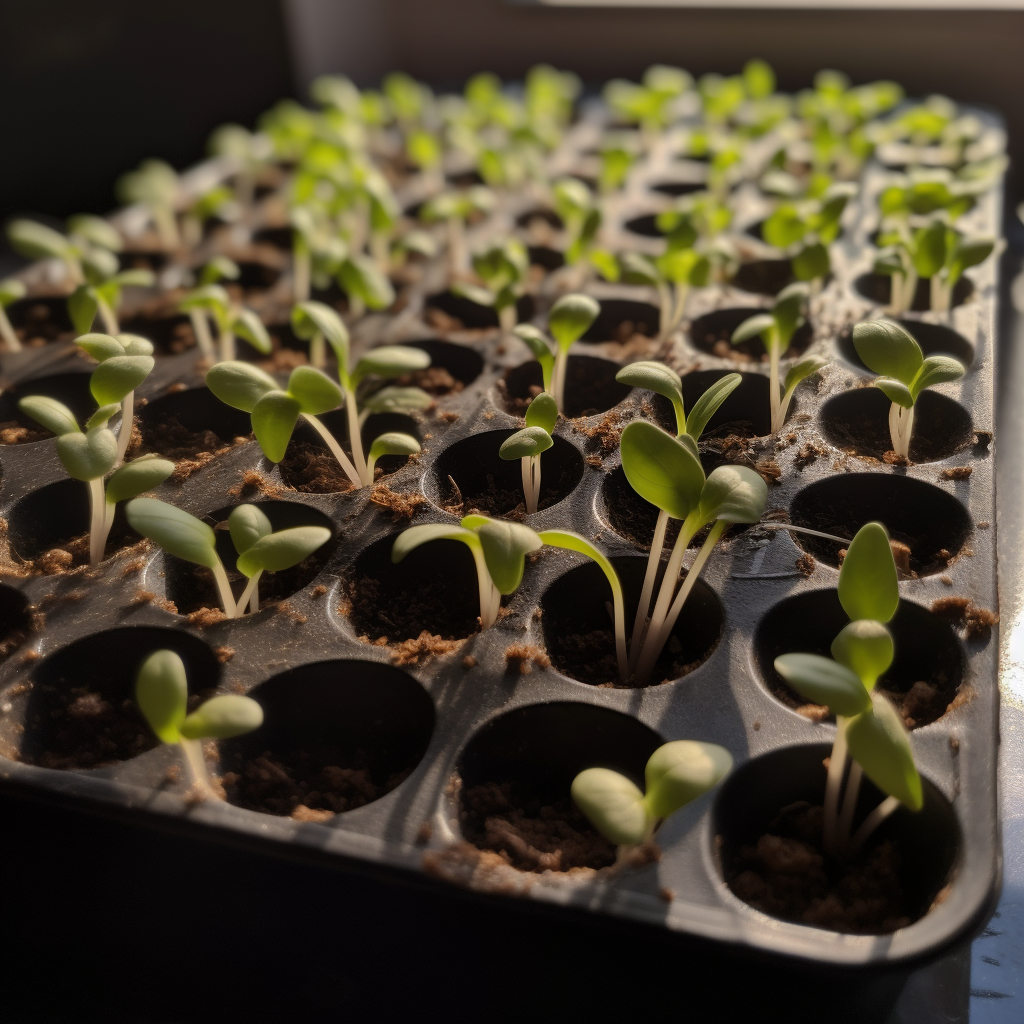
4. Maintain Your Survival Garden
Regular maintenance includes watering, fertilizing, and warding off pests. A survival garden is not a set-it-and-forget-it project. You need to give it consistent care and attention. Regular watering, weeding, and pest control are all necessary to maintain a healthy garden.
As your crops grow, they may need additional support. Tomatoes, peas, and cucumbers, for instance, will benefit from trellises or stakes to support their growth and keep the fruit off the ground.
But don’t worry, the rewards — fresh, nutritious food — are well worth the effort.
5. Harvest Your Survival Crops
Harvesting at peak ripeness ensures optimal flavor and nutrient retention. Harvesting your crops is one of the most rewarding parts of survival gardening. It’s a tangible result of your hard work, bringing you one step closer to food independence.
Each crop has its signs of ripeness. Tomatoes, for instance, are best picked when fully colored and slightly soft to the touch.
Root crops like carrots and beets can be harvested when they reach a usable size. Leafy greens can be harvested a few leaves at a time, allowing the plant to continue growing.
Remember to be gentle when harvesting your crops. Rough handling can cause bruising or damage that reduces the storage life of your produce. Also, use a sharp knife or pruner for clean cuts, and handle the produce carefully.
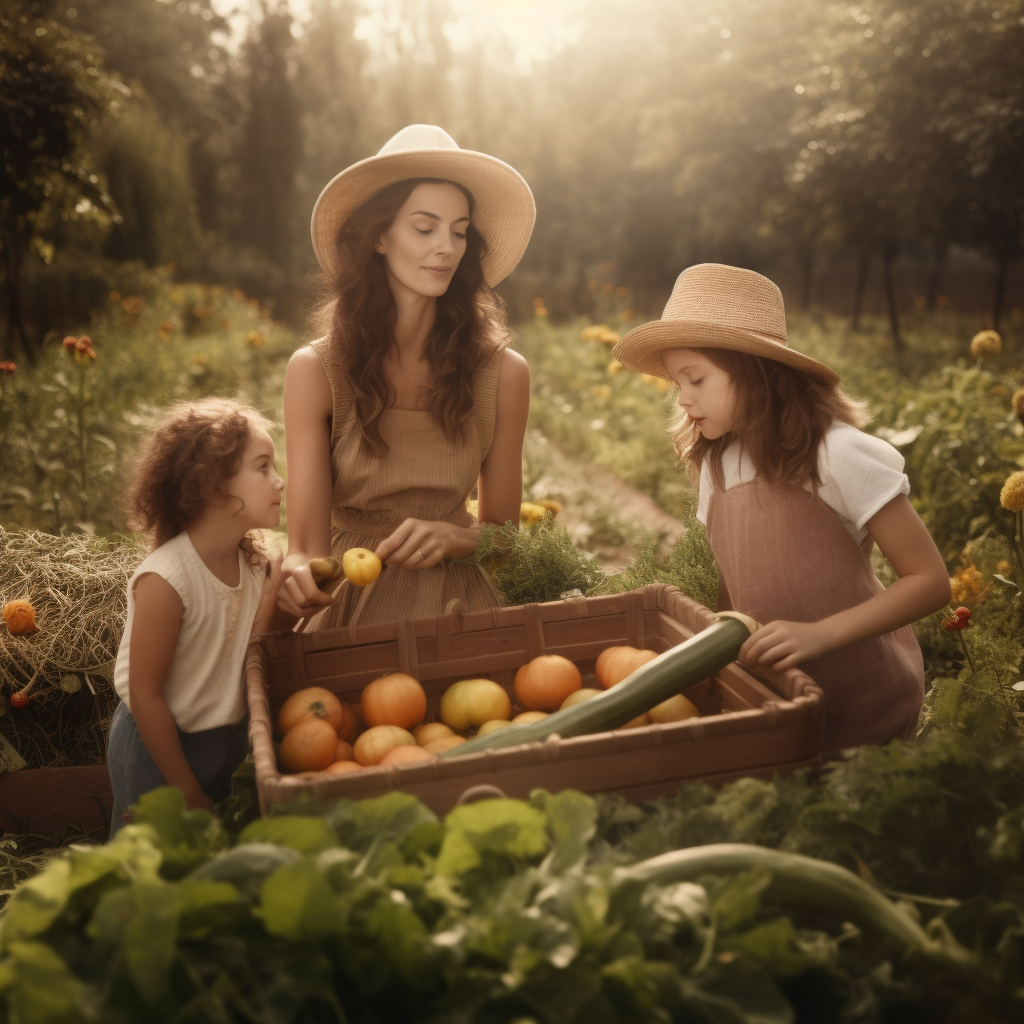
6. Store Your Survival Crops
Proper storage techniques extend the shelf life of your crops. Preservation methods like canning and drying allow for long-term storage.Once you’ve harvested your crops, proper storage is crucial to extend their shelf life and ensure you have enough food supply.
Many root crops like potatoes, onions, and garlic can be stored in a cool, dark, and well-ventilated place for several months.
Crops like tomatoes and peppers should be eaten fresh or can be preserved by canning, drying, or freezing. Certain crops, like beans and corn, can be dried for long-term storage.
Drying is a simple and effective way to preserve food, and it doesn’t require any special equipment or energy input.
7. Preserve Your Survival Crops
Preservation methods like canning and drying allow for long-term storage. Canning, pickling, freeze drying and fermenting are all traditional methods of preservation that can extend the life of your crops and add variety to your diet.
For instance, cucumbers can be pickled, tomatoes can be canned, and cabbage can be fermented into sauerkraut.
Preserving your food can be a rewarding and practical skill in a survival situation. It allows you to make the most of your harvest and ensures you have nutritious food year-round.

FAQ About the Best Survival Crops
What is the best survival food to grow?
The best survival crops to grow will keep you nourished and healthy during difficult times. Potatoes, my friend, are the answer to your survival food dilemma.
Why potatoes? They’re packed with carbohydrates, providing the energy you’ll need to face challenges head-on. Not only are they incredibly nutritious, but they’re also easy to grow and have a high yield.
What is crop rotation?
Crop rotation is the practice of planting different crops in the same area over sequential seasons. It’s an important part of maintaining soil health and ensuring a good yield.
By rotating crops, you can prevent the buildup of pests and diseases and enhance soil fertility.
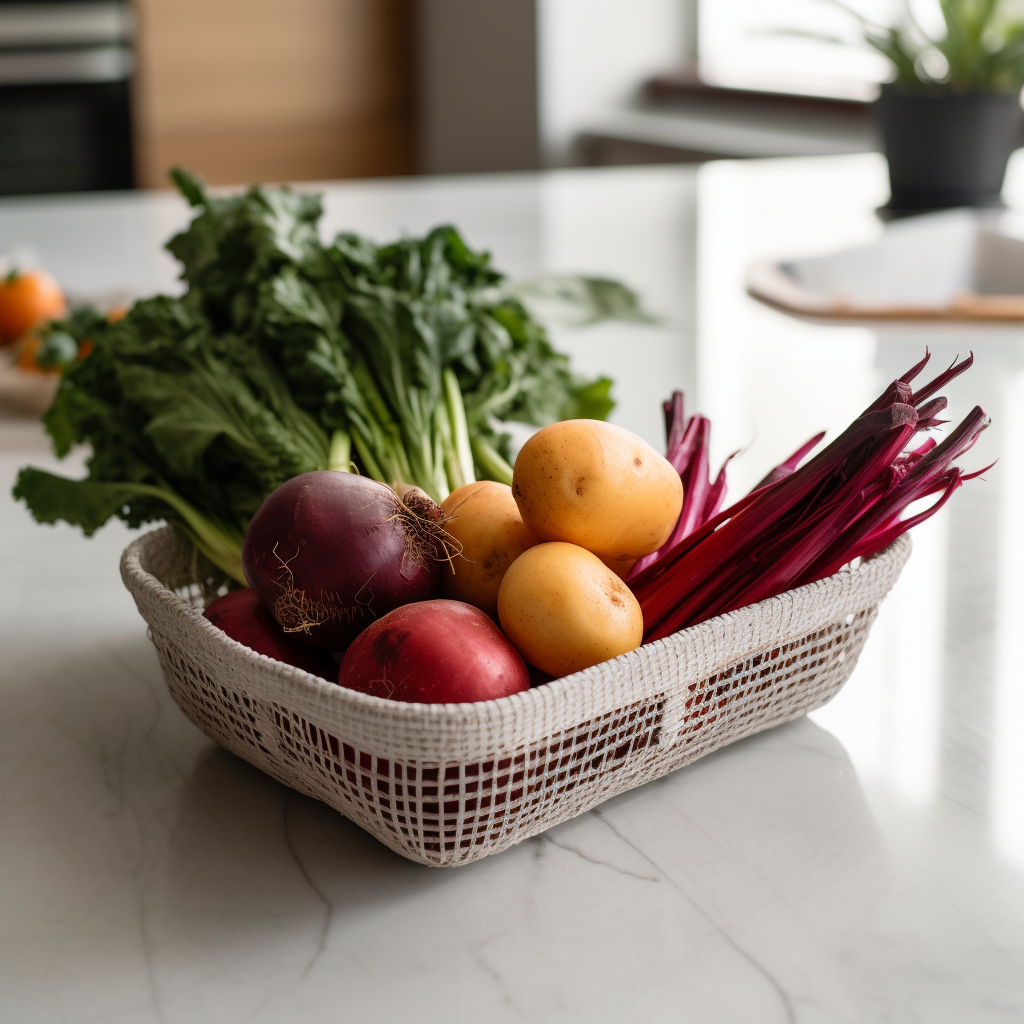
What vegetables are best for survival?
Kale and spinach are your green saviors! These nutrient-dense leafy greens will provide essential vitamins and minerals, ensuring you stay healthy and strong even in the most uncertain times.
Beans and peas, on the other hand, are packed with protein and fiber, offering you the energy and sustenance you need to face any challenges. They also fix nitrogen in the soil, improving its fertility for future crops.
Carrots and beets are resilient root vegetables that can withstand harsh conditions, making them ideal for survival situations. Their high yields and ability to store well ensure that you’ll have a consistent food supply.
What is the most resilient vegetable to grow?
Potatoes are not only incredibly hardy, but they’re also incredibly versatile. They can grow in various climates and soil types, from the arid deserts to the frosty mountains.
These tubers are packed with essential nutrients, such as vitamin C, potassium, and complex carbohydrates, which offer you energy and nourishment during tough times.
Moreover, potatoes can be stored for months without refrigeration, ensuring a reliable food source throughout the year.
What is the easiest crop to farm?
One of the best survival crops for beginner farmers to plant is lettuce.
It’s a game-changer when it comes to effortless gardening and survival as it’s adaptable to various soil types and weather conditions.

Wrap Up On The Best Survival Crops
Each day that passes without you taking action is a day closer to potential food scarcity. Remember, time is of the essence.
And in a world that’s changing as quickly as ours, securing your food supply is no longer a luxury – it’s a necessity.
So why wait? Start planning the best survival crops in your garden today and take a step towards a more secure and sustainable future.
ABOUT THE AUTHOR
Angie Montgomery is the co-founder of Monday Day Prepping. She and her husband Bill have been "prepper's" since 2008. When she's not helping manage the homestead, she enjoys teaching her two boys how to cook and make natural alternatives to cleaners and other household items.

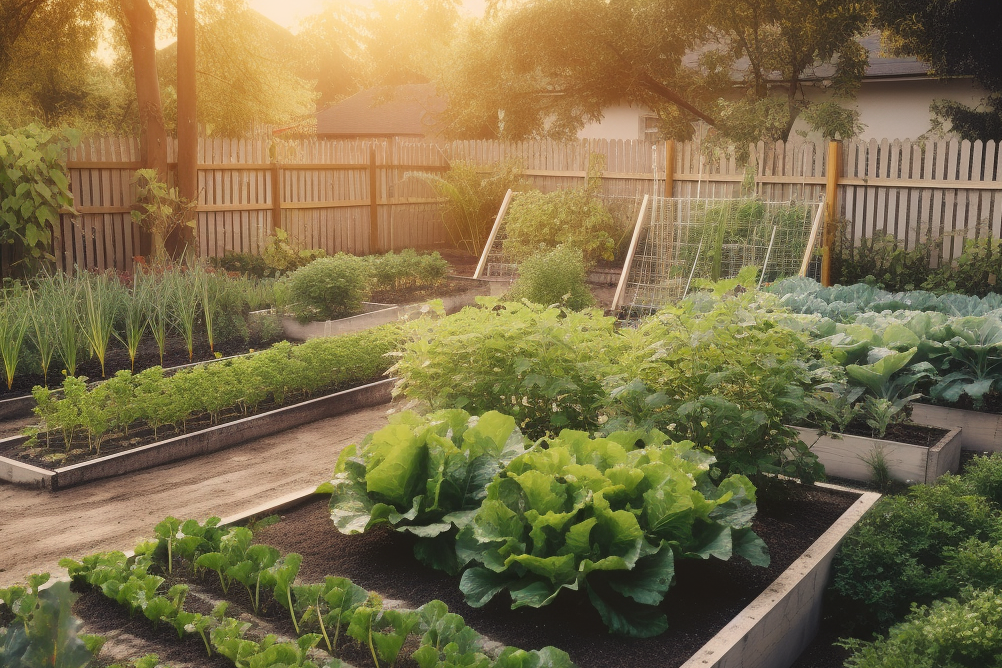
Great information